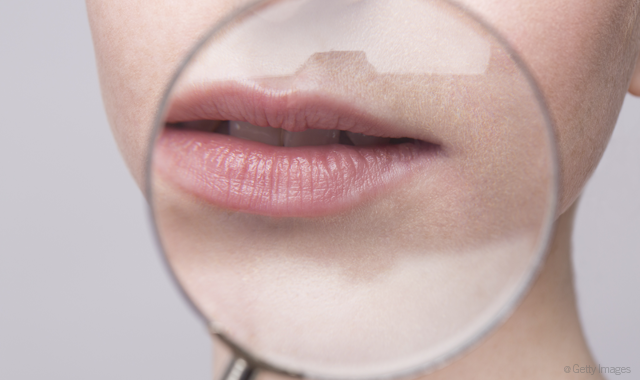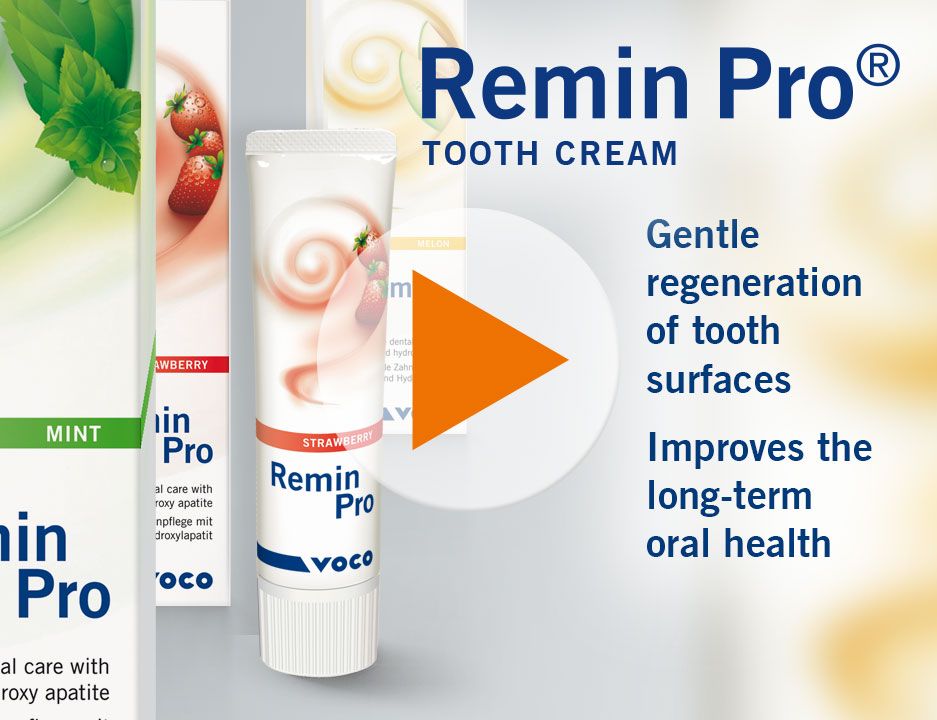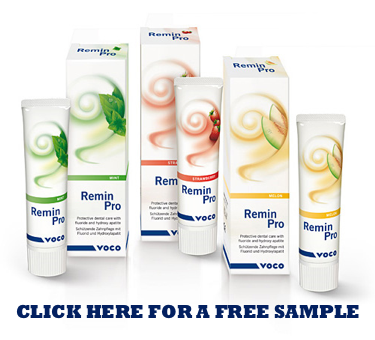Why dental hygienists should not treat patients with active herpetic lesions
You walk out to the reception area to greet your next patient for their prophy. Due to your attention to detail, as the patient approaches, you notice an active herpes simplex lesion on their lip (herpes labialis). Should you treat this patient?

You walk out to the reception area to greet your next patient for their prophy. Due to your attention to detail, as the patient approaches, you notice an active herpes simplex lesion on their lip (herpes labialis).
You seat them and after a few minutes of small talk you inquire about their “cold sore.” How long has it been present, do you get them often, etc.? After chatting with the patient you also have been updated that she is a new mom with an infant at home. You learned in hygiene school that elective dental procedures should be reappointed if a patient has an active herpetic lesion, so you let your patient know that treatment would be best postponed.
Then you approach your doctor to inquire about a prescription for an anti-viral and the recommendation of rescheduling the patient’s prophy appointment. However, your doctor doesn’t see the big deal with treating the patient; it’s just a cold sore and it’s no reason to lose production over.
More from the author: 5 interesting things hygienists have asked Kara RDH this month
So are you wrong in suggesting the patient reschedule? Are you remembering what you were taught in hygiene school inaccurately? Have protocols changed regarding elective dental treatment and patients with active herpetic lesions? The answer to all these questions is NO.
The only treatment a patient with active herpes virus should undergo in a dental setting is emergency treatment and direct treatment of the lesion (i.e. laser therapy).3,7 In other words, elective dental treatment such as a prophy, periodontal maintenance, debridement or non-surgical periodontal therapy/SRP should be postponed until the lesion(s) are healed. Treating this patient is not only a risk to them, but to you as the clinician.
Continue to page two to learn more about the risks...
A quick review
Herpes simplex virus type 1 (HSV-1) or herpes labialis is highly contagious. Reports vary, but it’s estimated that about 85 percent of the US population is infected with HSV-1.3 It is mainly transmitted by contact with the HSV-1 virus in sores, saliva and surfaces around the mouth. However, it can even be transmitted when oral and skin surfaces look normal and no symptoms are present.13 When tissue is infected, the virus initially replicates in epithelial cells. Then it ascends sensory nerves to the dorsal root ganglia, specifically the trigeminal ganglion in HSV-1.12
The first outbreak of a primary infection of HSV-1 can be different for children than in adults.Children under the age of five tend to manifest the primary HSV-1 virus with a rapid onset of gingivostomatitis (inflamed and erythematous gingiva) along with a high temperature (102°-104°F), vesicular lesions and tender lymphadenopathy. Children may not want to eat and feel listless. Adults can present with gingivostomatitis, but it tends to be less severe and tends to be more associated with posterior pharyngitis and tonsillitis – the lesions on the tonsils and posterior pharynx may have grayish exudate. Adults may present with fever, headache, sore throat, and feel malaise as well. Some individuals aren’t aware of the primary infection, as it can be asymptomatic, however in others it can make them quite ill. Acute herpetic gingivostomatitis lasts five to seven days and the symptoms subside in about two weeks.8
More from the author: 6 things hygienists with they could tell their boss/doctor/dentist
Here, after an initial period of replication, it establishes latency in neurons. Meaning the virus never dies, it never goes away, it just sits in the nerve and remains with the host for a lifetime. The virus can be reactivated by stress, sunlight, sickness or trauma. The reactivation, herpes labialis, begins with a prodrome of pain, burning, and tingling. Then is followed by the formation of erythematous papules that rapidly develop into vesicles that become pustular and ulcerate.8 The pain associated with herpetic lesions can be asymptomatic to severe. Lesions tend to resolve within two weeks.11
Two things I hope you got from the review: painful and highly contagious. Not to mention forever. For some it is also quite embarrassing due to the social stigma surrounding herpes. The ability to eat, due to the pain of herpes lesions, is a significant problem too.
Continue to the next page to see what could happen if you treat a patient with an active lesion...
SPONSORED CONTENT
Check out the video above or click here to learn more about Remin Pro.
Protective Care without the risk of milk protein allergies
o Triple protection of fluoride, hydroxyapatite
(calcium and phosphate) and Xylitol
o Hydroxyapatite restores the mineral balance
o 61% more fluoride (1,450 ppm) than the leading brand
o Contains Xylitol which has cariostatic properties
o No risk of milk protein allergies as with other brands
o Fast acting and great tasting
o Easy to apply with the finger or toothbrush
So let’s say you do perform a prophy on this patient. You are very careful to not touch the lesion, but without knowing, you do. You then move your gloved hand across the patient’s lip. You have now infected additional nerve roots. Let’s say you use an extra-oral fulcrum; you have now spread the virus again. Don’t think the herpes virus is limited to the vermillion border, it can infect perioral and intraoral tissue as well. The virus can also be found in saliva, so even if you are very careful during treatment to avoid the lesion, you could still be spreading through saliva transfer. There’s no way to do a prophy and avoid a patient’s saliva.
While treating this patient with an active herpetic lesion, you use the ultrasonic and polish with a slow-speed handpiece. Aerosols can also occur through the use of an air polisher. The potential for handpieces to transmit the herpes virus has been demonstrated.9 Hence, the Centers for Disease Control and Prevention (CDC) states handpieces need to be heat sterilized in between every patient – surface disinfecting and barriers are not sufficient.7
Because there is viral shedding into the saliva, you are now creating aerosols containing the virus. Herpes can be transmitted to both the patient’s and even your eyes. When HSV-1 infects the eye, it may infect the corneal layer or the epithelium which is called herpes keratitis or the infection can go deeper into the cornea called stromal keratitis. Stromal keratitis is the most common cause of infectious blindness in the United States due to the corneal scarring caused by the virus. 5,6,12
More from the author: A game-changer: 2017 will bring a new CDT code for gingivitis
Another serious form of ocular herpes is iridocyclitis in which the iris and surrounding tissues become inflamed causing blurred vision, sensitivity to light, pain and redness.6 Even if you and your patients are wearing eye protection with side shields there is no guarantee of remaining safe from these HSV-1 ocular infections.3
There has been a reported case of a dental hygienist becoming infected in both eyes with herpes keratitis. While the report states the exact origin of the infection was unknown, this hygienist regularly performed prophies on patients with active herpetic lesions using the ultrasonic. She also rubbed her eyes a lot.3 I don’t like to assume, but common sense and deductive reasoning tells me that if her only known exposure was in the dental office where virus-containing aerosols were present because she not only treated these patients but used the ultrasonic and rubbed her eyes a lot, you do the math. This and the fact that the virus can survive on environmental surfaces for hours. More specifically it can survive on plastic (like your pen) for four hours, three hours on cloth and two hours on skin.10 Herpes can also infect seemingly intact skin. Even if this hygienist washed her hands, her pen may have been contaminated by aerosols, she then rubbed her eyes and this led to her infection. The possibility is there.
Continue on to learn about the dangers of herpetic whitlow...
Let’s not forget about herpetic whitlow. Think it was only a problem before clinicians wore gloves? Think again. Studies have shown that during use, gloves can develop minute or micro tears.7 These tears, even though you aren’t aware of them, can expose you to HSV-1 if you are treating a patient with an active lesion. Now, let’s say you have been infected with herpetic whitlow. The CDC not only states that patients with active herpetic lesions should be reappointed for elective dental procedures, but also states a clinician shouldn’t return to work until herpetic whitlow has subsided.7 That could be two weeks you are out of work. If you don’t have benefits like sick days, vacation days or short-term disability, that’s two weeks without pay every time you have an outbreak. Is seeing one patient worth that?
HSV-1 has more risks than just lesions and blindness. A rare (two cases per million per year), but serious complication of HSV-1 is herpes simplex encephalitis. The pathogenesis is unknown however the thought is that the primary or recurrent HSV-1 virus reaches the temporal lobe in the brain by ascending neural pathways such as the trigeminal tracts or the olfactory nerves. Herpes simplex encephalitis is the most common cause of encephalitis in the United States and the most common cause of sporadic lethal encephalitis. The mortality and morbidity is high even when appropriate anti-viral therapy is administered. The mortality is 30 percent one year after treatment with 70 percent of survivors being left with significant neurological effects. If left untreated the mortality rate is 70-80 percent within seven to 14 days.2,12 Still think that herpes is just getting lesions once in a while and is no big deal?
More from the author: 7 reasons to date or marry a dental hygienist
Oh, but you treat the herpetic lesion with laser therapy then do the prophy, because that’s totally safe for you and the patient right? Incorrect. According to research, none of the laser treatment modalities are able to completely eliminate the virus or even its reoccurrence.
While laser therapy can decrease the pain, healing time of the lesion, and the interval of recurrences without side effects, it simply doesn’t take the viral load to zero.4 Performing a prophy (or any elective dental treatment) after laser therapy can still spread the virus. Let’s also not forget that viral shedding of HSV-1 into the saliva occurs for three or more weeks; that’s at least a week if not more of viral shedding after the lesion has healed.1,8 Laser therapy or not, there’s still at least a three week window of infection and spread risk. Again, the only dental procedures that should be performed on a patient with an active herpetic lesion is emergency treatment or direct treatment of the lesion. No prophy, no debridement, no non-surgical periodontal therapy/SRP or no periodontal maintenance-it can wait.
Continue on to learn about potential dangers to family members...
SPONSORED CONTENT
Lastly, let’s not forget that this patient has an infant at home. HSV-1 can be deadly for children under three months old. One third of herpes simplex encephalitis cases occur in children, 10 percent of cases being caused by HSV-1 due to contact with a person who is shedding HSV-1 from herpes labialis, herpes whitlow or other cutaneous lesions. Even with anti-viral therapy, if the child survives (only 19 percent survive with anti-viral therapy), research has shown that after 12 years of treatment, 44 percent of children have ongoing seizures and 25 percent exhibited developmental delay with poor long-term neurological outcomes. Relapses of encephalitis occur in up to 26 percent of children who have been infected.2
More from the author: 5 fascinating questions dental hygieniets asked Kara RDH this month
If you see this patient for her prophy, spread the virus causing more lesions and contaminate her with virus-laden aerosols that will remain on her clothes and skin for hours, she could infect her child. With more lesions, comes an increased chance that wild and uncontrollable baby hands could touch those lesions. There are numerous news stories of infants “dying from a kiss” from someone with an active herpetic lesion that can be found with a simple Google search. This patient needs to be educated on not only the risk of HSV-1 to her, but to her child.
Before you question your hygiene education and consider seeing a patient for elective treatment with an active herpetic lesion, please consider this information. Use this information to educate your doctor of the risks if you are urged to see the patient. Educate and reappoint the patient. Instead use the time to sharpen your instruments, help in sterile or stock supplies - just don’t see a patient for an elective dental procedure with an active herpetic lesion.
Continue to the next page for article references...
References
1) American Skin Association. (2012). Herpes Simplex Virus. Retrieved from http://www.americanskin.org/resource/herpes.php
2) Anderson, W.E. (2016, June). Herpes Simplex Encephalitis. Retrieved from http://emedicine.medscape.com/article/1165183-overview#a5
3) Browning, W.D., McCarthy, J.P. (2012). A Case Series: Herpes Simplex Virus as an Occupational Hazard. Journal of Esthetic and Restorative Dentistry, 24(1): 61–66. Retrieved from http://www.ncbi.nlm.nih.gov/pmc/articles/PMC3437498/
4) De Paula, E.C., Aranha, A.C., Simoes, A., Bello-Silva, M.S., Ramalho, K.M., Esteves-Oliveira, M., De Freitas, P.M., et. al. (2013). Laser Treatment of Recurrent Herpes Libialis: A Literature Review. Lasers in Medical Science, (4):1517-29. Retrieved from http://www.ncbi.nlm.nih.gov/pubmed/23584730
5) Farooq, A.V., Shukla, D. (2012). Herpes Simplex Epithelial and Stromal Keratitis: An Epidemiologic Update. Survey of Ophthalmology, 57(5):448-62. Retrieved from http://www.ncbi.nlm.nih.gov/pubmed/22542912
6) Hill, J., Slonim, C. (2013, August) Ocular Herpes. Retrieved from http://www.allaboutvision.com/conditions/ocular-herpes.htm
7) Kohn, W.G., Collins, A.S., Cleveland, J.L., Harte, J.A., Eklunt, K.J., Malvitz, D.M. Center for Disease Control and Prevention. Guidelines for Infection Control in Dental Health-Care Settings – 2003. MMWR 2003; 52 (Report No. 17). Retrieved from http://www.cdc.gov/mmwr/PDF/rr/rr5217.pdf
8) Salvaggio, M.R. Medscape. (2015, September). Herpes Simplex Clinical Presentation. Retrieved from http://emedicine.medscape.com/article/218580-clinical
9) McCarthy, G.M. (2000) Risk of Transmission of Viruses in the Dental Office. J Can Dent Assoc, 66:554-5, 557. Retrieved from https://www.cda-adc.ca/jcda/vol-66/issue-10/554.pdf
10) NHS Choices. (2015, October). How Long Do Bacteria and Viruses Live Outside the Body? Retrieved from http://www.nhs.uk/chq/Pages/how-long-do-bacteria-and-viruses-live-outside-the-body.aspx
11) Stoopler, E.T., Kuperstein, A.S., Sollecito, T.P. (2012). How do I Manage a Patient with Recurrent Herpes Simplex? J Can Dent Assoc, 78: c154. Retrieved from http://www.jcda.ca/article/c154
12) Whitley, R.J. Herpesviruses. In: Baron S, editor. Medical Microbiology. 4th Ed. Galveston (TX): University of Texas Medical Branch at Galveston; 1996. Chapter 68. Retrieved from www.ncbi.nlm.nih.gov/books/NBK8157/
13) World Health Organization. (2016, January). Herpes Simplex Virus. Retrieved from http://www.who.int/mediacentre/factsheets/fs400/en/

